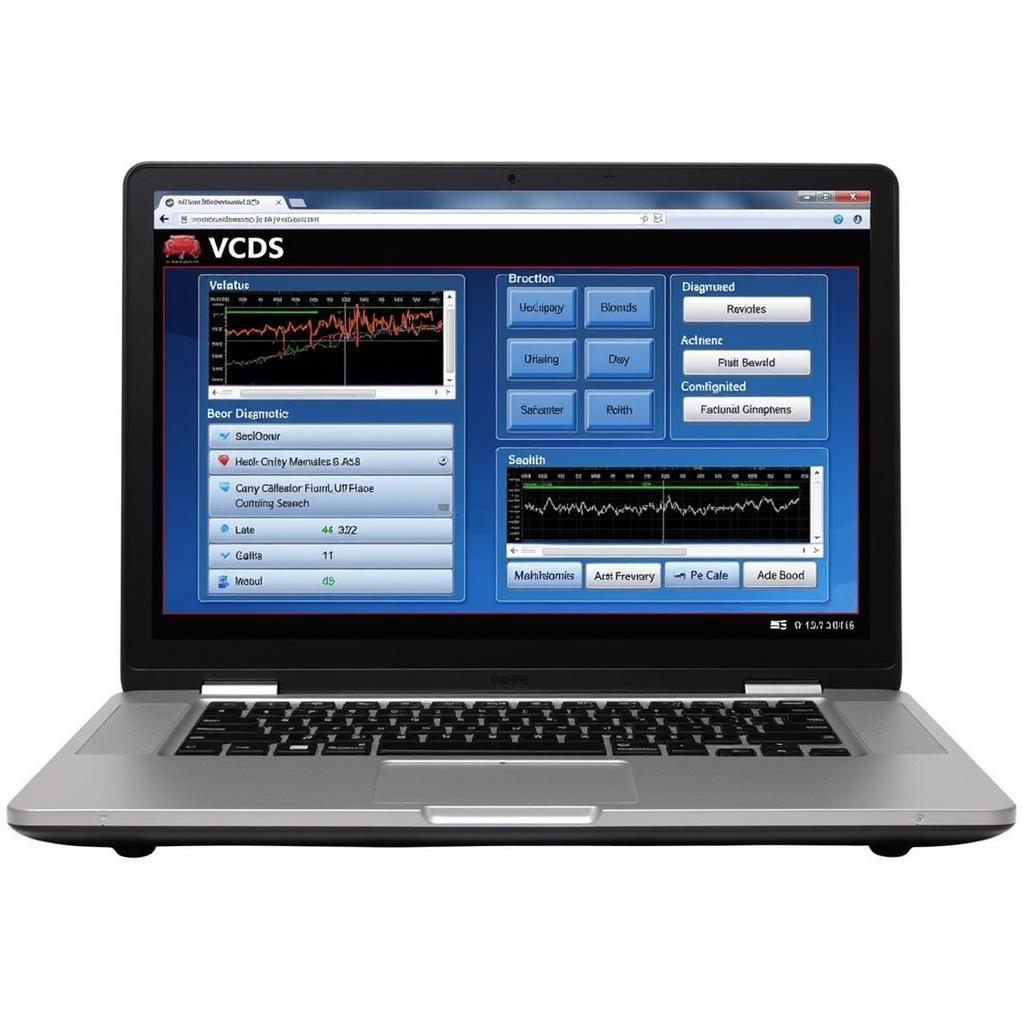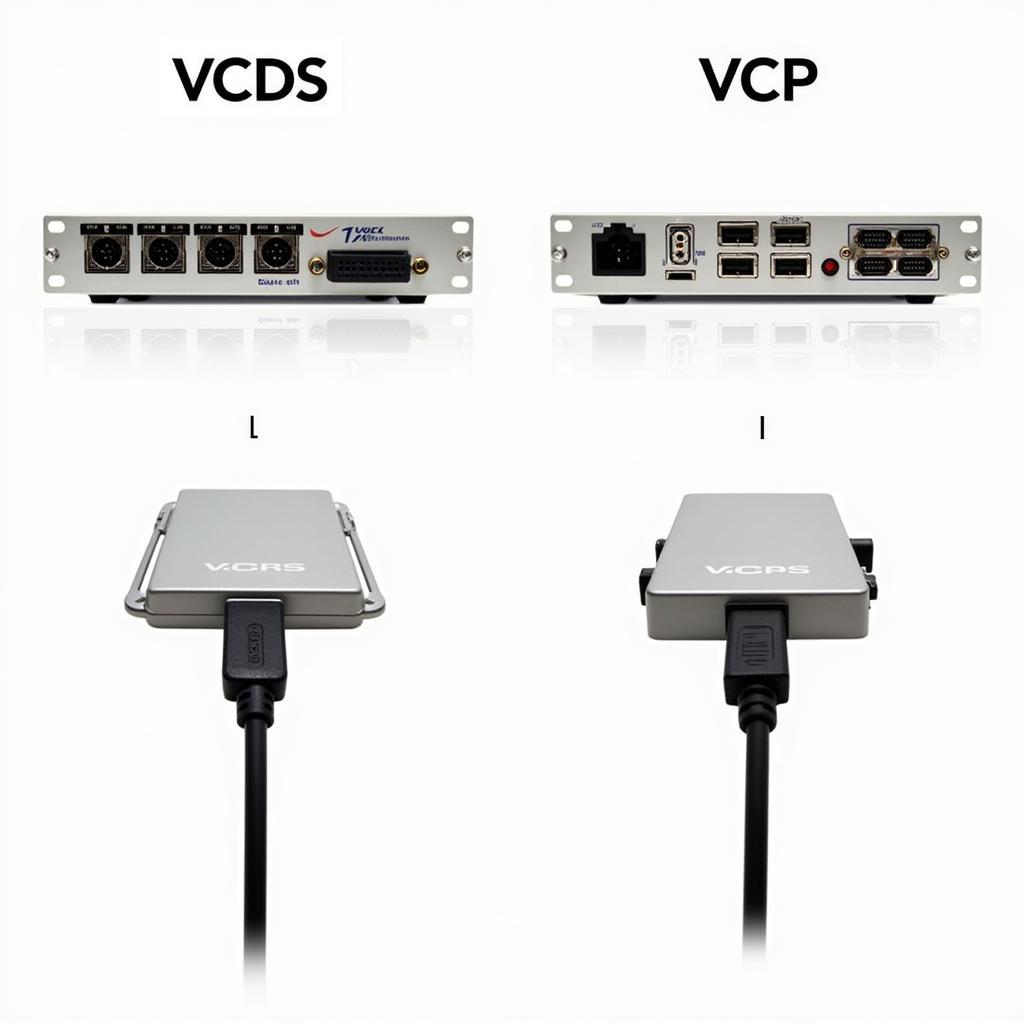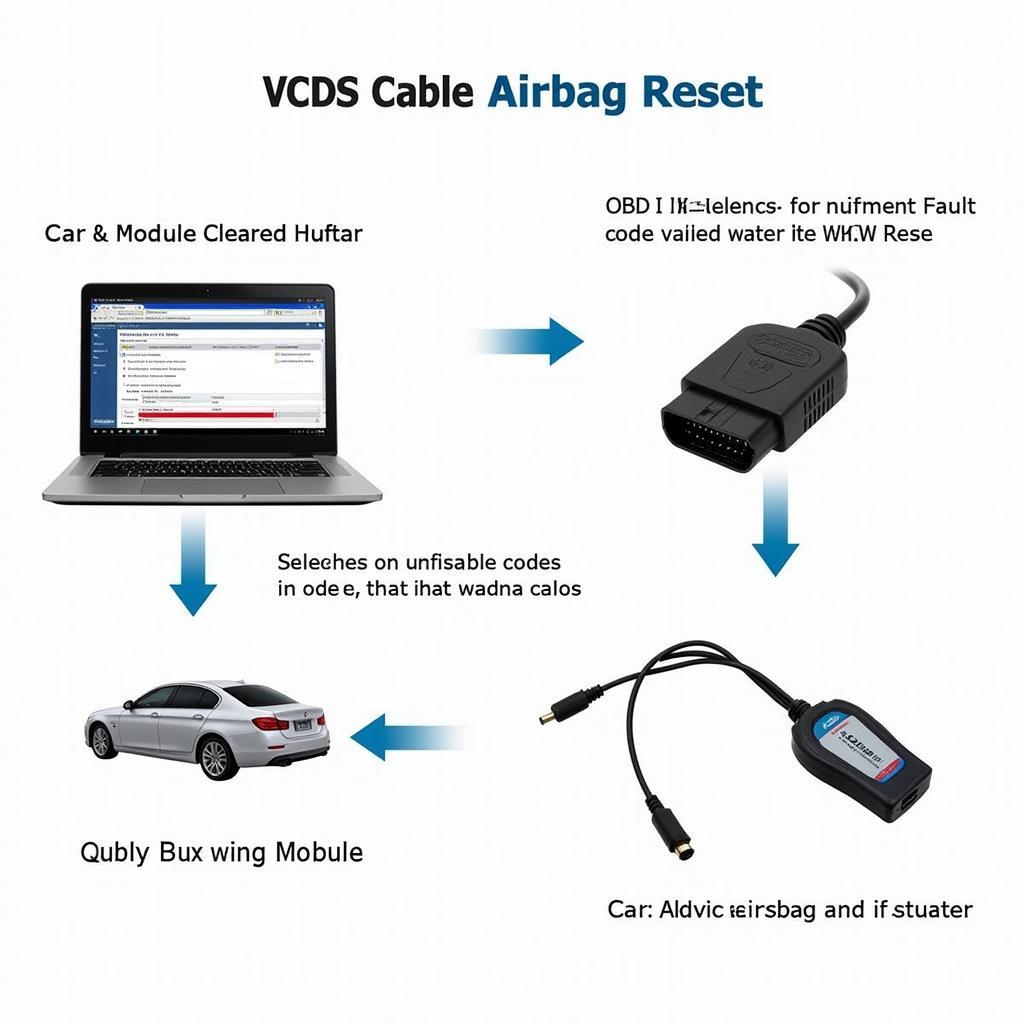VCDS and VCP are two popular diagnostic and programming tools used for Volkswagen, Audi, Seat, and Skoda vehicles. Choosing the right tool can be confusing. This article will help you understand the key differences between VCDS and VCP, their strengths and weaknesses, and ultimately guide you to the best choice for your specific needs, whether you’re a car owner, a workshop technician, or a professional mechanic.
Understanding VCDS: The Versatile Diagnostic Solution
VCDS (VAG-COM Diagnostic System) is a well-established diagnostic tool known for its user-friendly interface and broad compatibility with VAG vehicles. It excels at reading and clearing fault codes, performing basic settings, and accessing live data from various control modules. VCDS is a powerful tool for identifying and troubleshooting a wide range of issues, from simple sensor problems to more complex electronic malfunctions. Its intuitive design makes it accessible to both DIY enthusiasts and professional technicians. For many common tasks, VCDS offers a cost-effective and reliable solution.
Exploring VCP: The Advanced Programming Powerhouse
VCP (Vag Can Pro) is a more advanced tool designed for deeper level programming and coding. While it can also perform diagnostic functions like reading and clearing codes, VCP’s strength lies in its ability to modify control module settings, adapt new components, and perform complex coding procedures. This makes it invaluable for tasks such as retrofitting features, customizing vehicle settings, and resolving complex electronic issues that VCDS might not be able to address. VCP caters to more experienced users and professional workshops that require access to advanced programming functionalities.
 VCDS Interface Overview
VCDS Interface Overview
VCDS vs. VCP: Feature Comparison
A direct comparison helps highlight the key differences: VCDS shines with its ease of use and comprehensive diagnostic capabilities, making it ideal for general troubleshooting and maintenance. VCP, on the other hand, is the go-to solution for advanced programming and customization. Think of VCDS as a versatile multi-tool, while VCP is a specialized precision instrument.
Which Tool is Right for You?
The best choice depends on your specific needs and technical expertise. If you’re a car owner looking to perform basic diagnostics and maintenance, VCDS is likely the more suitable option. Its user-friendly interface and lower price point make it an excellent choice for DIY enthusiasts. However, if you’re a professional technician or a workshop dealing with complex coding and programming tasks, VCP’s advanced functionalities will be essential. Consider your budget, technical skills, and the specific tasks you intend to perform.
Common Use Cases for VCDS and VCP
VCDS is commonly used for tasks like checking engine fault codes, diagnosing ABS issues, resetting service lights, and monitoring sensor data. VCP, on the other hand, is often used for tasks like adapting new control modules, coding new keys, retrofitting features like adaptive cruise control, and performing complex diagnostics on advanced driver-assistance systems. Choosing the right tool ensures you have the appropriate capabilities for the task at hand.
Cost Considerations: VCDS vs. VCP
VCDS generally comes at a lower price point than VCP. This makes it a more accessible option for individual users and smaller workshops. VCP’s higher cost reflects its advanced capabilities and is typically a worthwhile investment for professional workshops that regularly perform coding and programming tasks. Factor the cost into your decision-making process.
Choosing the right diagnostic tool can significantly impact your efficiency and effectiveness.
Understanding your needs and the capabilities of each tool is crucial for making the right choice. Investing in the appropriate diagnostic tool will empower you to perform maintenance, diagnostics, and programming tasks with confidence and precision.
 VCDS and VCP Hardware Comparison
VCDS and VCP Hardware Comparison
Conclusion: Making the Informed Decision
Ultimately, the choice between VCDS and VCP depends on your specific requirements and technical expertise. vcp vs vcds provides a comprehensive comparison to help you make an informed decision. By carefully considering your needs and the strengths of each tool, you can choose the diagnostic solution that best suits your automotive endeavors. VCDS offers a user-friendly and cost-effective solution for general diagnostics, while VCP provides advanced programming power for professional use. Choose wisely, and empower yourself with the right tool for the job.
FAQ
-
Can I use VCDS and VCP on the same vehicle? Yes, both tools can be used on VAG vehicles, but they offer different functionalities.
-
Is VCDS suitable for professional use? While many professionals use VCDS, VCP is generally preferred for advanced programming tasks.
-
Do I need any special training to use these tools? Basic computer skills are sufficient for VCDS, but VCP requires more technical expertise.
-
What are the system requirements for running VCDS and VCP software? Both require a Windows-based PC.
-
Can I update the software for VCDS and VCP? Yes, both tools offer software updates to ensure compatibility with newer vehicle models.
-
What kind of support is available for VCDS and VCP users? Online forums, user manuals, and technical support are available.
-
What is the warranty period for these tools? Warranty periods vary depending on the vendor and product version.
Quote from John Smith, Senior Automotive Technician at Smith Automotive Solutions: “VCDS is my go-to for quick diagnostics, but when I need to dive deep into coding, VCP is indispensable.”
Quote from Jane Doe, Lead Diagnostic Technician at Doe Automotive: “Having both VCDS and VCP in our workshop allows us to handle any VAG vehicle issue efficiently.”
Have more questions about choosing between was ist besser vcds oder vcp or other diagnostic tools? Check out our other articles on vcds vs.
Need help with your car diagnostics? Contact us on Whatsapp: +1 (641) 206-8880, Email: [email protected] or visit us at 276 Reock St, City of Orange, NJ 07050, United States. Our customer service team is available 24/7.


